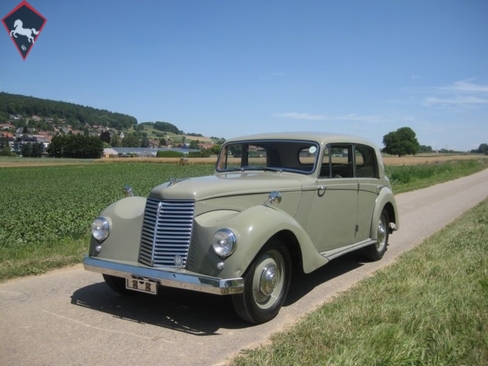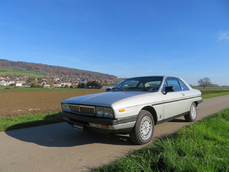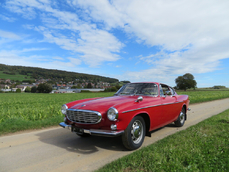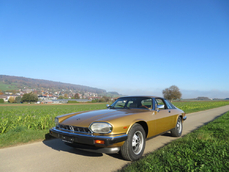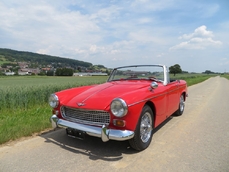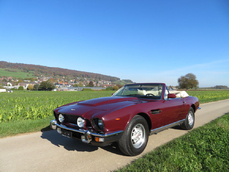Armstrong Siddeley Hurricane Whitley 1951
General description :
Äusserst rare englische Limousine mit viel Charme und einer wunderbaren schönen Form, auch der 6-Zylinder-Motor läuft richtig gut und macht viel Freude. Dieses Fahrzeug wurde vor über 10 Jahren von England importiert und mit viel liebe gepflegt und gehegt. In den 80er Jahren wurde die Karosserie komplett revidiert, vollständige Geschichte bis zum 1. Besitzer zurück bekannt, MFK 5.2012 Veteran. Eine seltene Gelegenheit!
(Richtpreis: Verkauf ab Schweiz zu Euro-Tageskurs.)
Wir kaufen, verkaufen und vermitteln klassische Fahrzeuge, Oldtimer und Sportwagen. Ständiges Angebot von ca. 60 Fahrzeugen.
Fragen Sie uns, es lohnt sich!
Mehr Informationen und weitere Angebote finden Sie unter: oldtimers.ch
Irrtümer, Fehler und Zwischenverkauf vorbehalten.
https://home.mobile.de/TOURING-GARAGEAG#des_247274876
1951 Armstrong Siddeley Hurricane Whitley is listed sold on ClassicDigest in Oberweningen by Auto Dealer for €20100.
Car Facts
Car type : Car Make : Armstrong Siddeley Model : Hurricane Model Version : Whitley Engine size : 2.3 Model Year : 1951 Sub type : Sedan Location : Wehntalerstrasse 25CH-8165 Oberweningen
Sold
Seller Information
Sold
Other cars listed for sale by this dealer
About Armstrong Siddeley
Armstrong Siddeley was a British luxury car manufacturer that operated from 1919 to 1960. The company was known for producing high-quality vehicles that combined luxury, engineering excellence, and innovative features. Here's an overview of Armstrong Siddeley's history, notable models, and its relation to Jaguar, Daimler, and Rolls-Royce:1. History: Armstrong Siddeley was formed through the merger of Armstrong Whitworth and Siddeley-Deasy, two established engineering companies in the early 20th century. The company initially focused on aircraft engine production but expanded into automobile manufacturing in the 1920s.
2. Notable Models:
- Armstrong Siddeley 18/50: Introduced in the 1920s, it was a luxury touring car powered by a six-cylinder engine. It established the company's reputation for quality and refinement.
- Armstrong Siddeley Hurricane: Produced in the 1930s, it was a sports saloon that featured advanced features like an all-steel body, hydraulic brakes, and independent front suspension.
- Armstrong Siddeley Star Sapphire: Introduced in the 1950s, it was a luxurious executive car equipped with a powerful six-cylinder engine and advanced features like automatic transmission and self-leveling suspension.
3. Relation to Jaguar, Daimler, and Rolls-Royce: Armstrong Siddeley occupied a similar market segment as Jaguar, Daimler, and Rolls-Royce during its prime. While each brand had its own distinct identity, there were some connections and comparisons between them:
- Jaguar: Armstrong Siddeley competed with Jaguar in the luxury car market. Both companies produced elegant and high-performance vehicles, but Jaguar eventually gained more prominence and commercial success.
- Daimler: Daimler was another British luxury car manufacturer, known for its association with the British royal family. While Daimler had its loyal following, Armstrong Siddeley's focus on engineering and advanced features differentiated it from Daimler.
- Rolls-Royce: Armstrong Siddeley shared some similarities with Rolls-Royce in terms of luxury and refinement. However, Rolls-Royce had a more prestigious image and catered to an even higher-end clientele.
Unfortunately, by the 1950s, Armstrong Siddeley struggled to keep up with evolving market demands, increasing competition, and financial challenges. The company was eventually acquired by the Bristol Aeroplane Company, leading to the cessation of car production in 1960.
While Armstrong Siddeley may not have achieved the same level of recognition and longevity as Jaguar, Daimler, and Rolls-Royce, it left a legacy of producing elegant and well-engineered luxury cars that are still appreciated by collectors and enthusiasts today.
